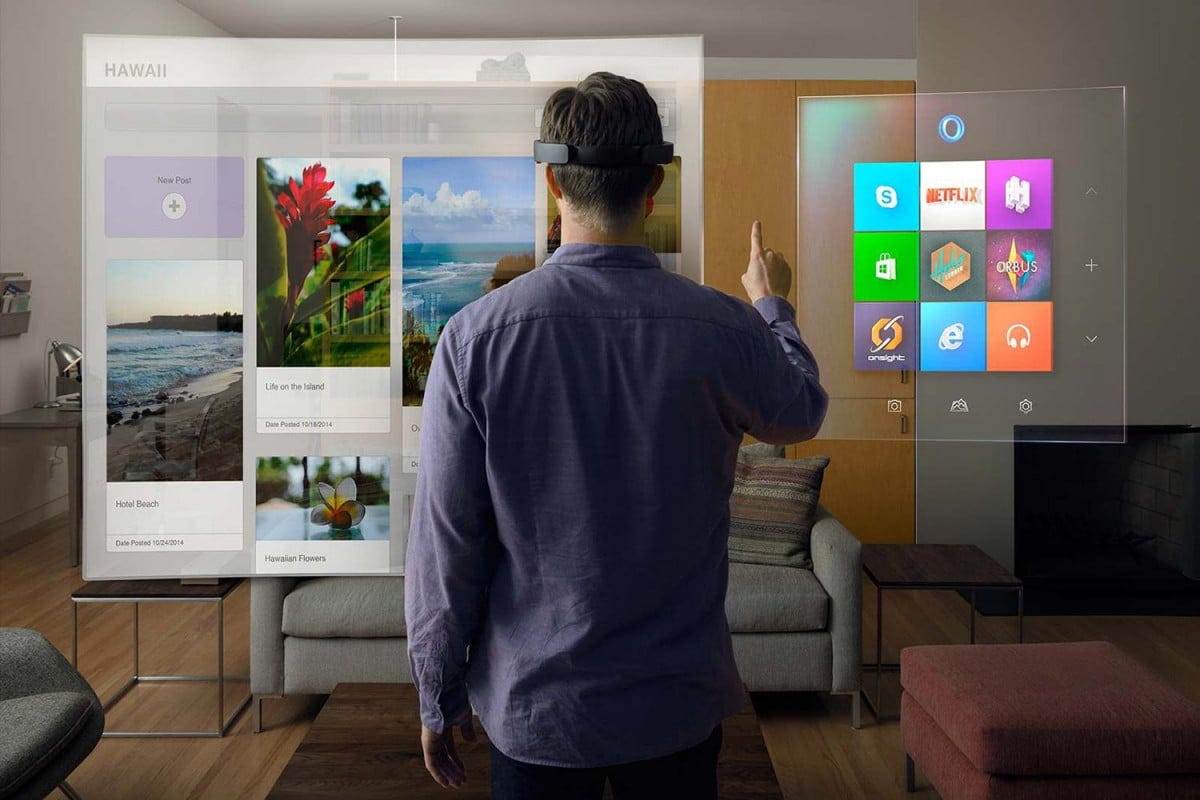
Mixed Reality (MR) is empowering health science experts to reimagine and renovate the healthcare industry by accelerating the process of diagnoses, making the care-time more efficient, enabling a personalized experience for patients, and improving the outcomes.
When it comes to using technology practically then, MR technology has revolutionised the surgery procedure by making it possible for surgeons to perform an operation on a patient that is thousands of miles away. With mixed reality surgery, nurses can sharpen their skills and perform hundreds of operations virtually before even touching a patient. It is safe to say that mixed reality in healthcare is making the impossible possible.
MR combines elements of virtual and augmented reality. It allows an individual to interact with the external world where virtual objects are present. MR technology is widely applicable in medicine. Let’s discuss a few trends below:
- The AV/VR in the healthcare market is expected to reach 7.05 billion USD by 2026. Hence, the application of mixed reality in healthcare is going to increase tremendously. This increase in market demand is due to various factors such as the advancement of 5G technology, mobile applications, increasing disease awareness etc.
- Augmented reality and virtual reality are emerging technologies in the healthcare industry. AR and VR could be used in a variety of settings including physician training, patient treatments and hospital management. In 2018, the North American healthcare AR and VR industry was valued at 477 million U.S. dollars. By 2025, that is expected to increase exponentially to 4.64 billion U.S. dollars.
- The global mixed reality healthcare market size was valued at USD 54.2 million in 2019 and is expected to grow at a compound annual growth rate (CAGR) of 48.7% from 2020 to 2027. Increasing awareness regarding the utilization of mixed reality technology in surgery and rising adoption of MR in medical training processes are the key factors driving the growth of this market.
You are now well aware how the adoption of mixed reality in healthcare is changing the industry and bringing the healthcare industry together. Let’s discuss its applications and benefits.
Benefits of Mixed Reality In Surgery
Mixed reality in modern surgery enables pre-procedural planning and visualization. It also helps in reducing errors and improving the overall experience of the patient. Let’s dive deep and discuss the uses of mixed reality in surgery!
1. Learning opportunities for healthcare professionals

Imitation of a particular procedure is the most effective method of education. It helps one to prepare for various situations that could go wrong during a surgery. Mixed Reality can help a medical student in such rare situations, which may be difficult to arrange for in real clinical settings. MR related simulations are way more cost effective than traditional simulation devices.
In simple words, before surgery, training nurses as they virtually work out challenges they could encounter during real-life procedures, and improving the collaboration and communication between doctors and patients is one of the biggest benefits of mixed reality.
Training simulations are expected to be a major application of immersive technologies in the healthcare sector within the next two years according to 68 percent of XR industry experts who responded to the 2020 survey.
Use Case: In order to launch apps like HoloHuman and HoloPatient two companies collaborated. Pearson- a world renowned education company joined hands with Microsoft to make these apps come to life. These apps use holograms to train medical professionals to diagnose and treat the patients.
2. Reduced time and error risk in reconstructive surgery

Human error is a possibility in all the surgical procedures. On the other hand, mixed reality enables the process of reconstructive surgeries. This process has been proven to be very successful at the Imperial College at St. Mary’s Hospital, London. With the help of reconstructive surgeries, surgeons are able to locate and reconnect major blood vessels. The holographic overlays help surgeons to see the bones and identify the course of blood vessels which assists them in their surgery, improving the outcome for the patient.
For example: An article in The Times showed examples of reconstructive surgeries on a 41-year-old man and an 85-year-old woman that were performed successfully.
3. Better than traditional methods

MR virtual reality opens various doors to efficient communication and collaborations among medical professionals sitting in different parts of the world and their patients that traditional methods of surgery could not. MR helps healthcare professionals to access the patient’s medical information and anatomical pictures in 3D during the surgery. It also helps to build a bridge between surgeons working in different parts of the world to collaborate by the use of microphones and sensors. All these amazing features make mixed reality a valuable asset in the medical industry.
4. Planning and assisting become more effective

The MR technology in the medical field can be really helpful for planning the surgery. Further the plan can also be used while assisting the surgery. A plan of surgery made on an X-ray of the patient can be used while operating. The plan can be reflected on the patient while operating which in turn makes the work easier and accurate. This technology can do wonders when it comes to increasing the accuracy and providing a positive result.
Applications of Mixed Reality Technology
1. Medical mannequins with MR

Medical mannequins are brought to life using Mixed Reality, which is an invaluable asset during training medical students. Traditionally, the mannequins used in medical training are dummies and do not give the experience of a real person. But with image recognition, MR translates the dummy into a real person. When the trainee sees a real person in stress through MR the situation becomes more realistic. This technology will also provide a risk- free environment and give space to learners to make mistakes and learn from their own mistakes at the same time.
Did you know the mannequin can be remotely controlled by a computer to continue reacting to the scenario? This is believed to be the most effective and consistent way of learning by professionals. This way teachers can observe how students interact with the patients while operating and check their technical skills.
2. Telesurgery with MR

Telesurgery is a remote controlled surgery via a robot. Such applications can be beneficial on battlegrounds, in army camps or in remote rural areas. Telesurgery being such an advanced technology still comes with some drawbacks which can be covered using MR technology. The major issue that comes to light is that of latency. In simple words, latency is the time delay between the instruction given by the surgeon and the movement of the robot which responds to instruction.
MR can solve this issue by replacing surgeons instructing the robots with the surgeons operating in the virtual world and the robots imitating the surgeons in the real world. The robotic use for operation can be improved by combining MR Telesurgery technology with the MR Surgery technology where a mannequin is placed to imitate a real person. Surgery guided by mixed reality will change and digitize the healthcare industry completely.
3. MR in Pharmaceuticals
The MR technology can be effectively used in the development of drugs. With the help of MR the pharma students can actually have a look at how a particular drug reacts in our body. As the technology advances the students will also be able to see different reactions of different medicines in different bodies. This will help the students to study the reactions in a more detailed and efficient way. This will also inspire professionals to introduce effective drugs for a better future.
The Future of Mixed Reality

Without a doubt I can say that mixed reality will continue to improve the quality of healthcare, surgeries and medical training. We can provide faster and better care at lower costs by deploying mixed reality before, during, and after procedures. You can now leverage mixed reality to enable continuous learning and widespread knowledge sharing.
Anteelo has helped many clients build custom mixed reality apps, which integrate applications with the latest technologies. If you are looking for AR VR MR app development services, get in touch with us and let’s discuss how we can make mixed reality possible for you.






